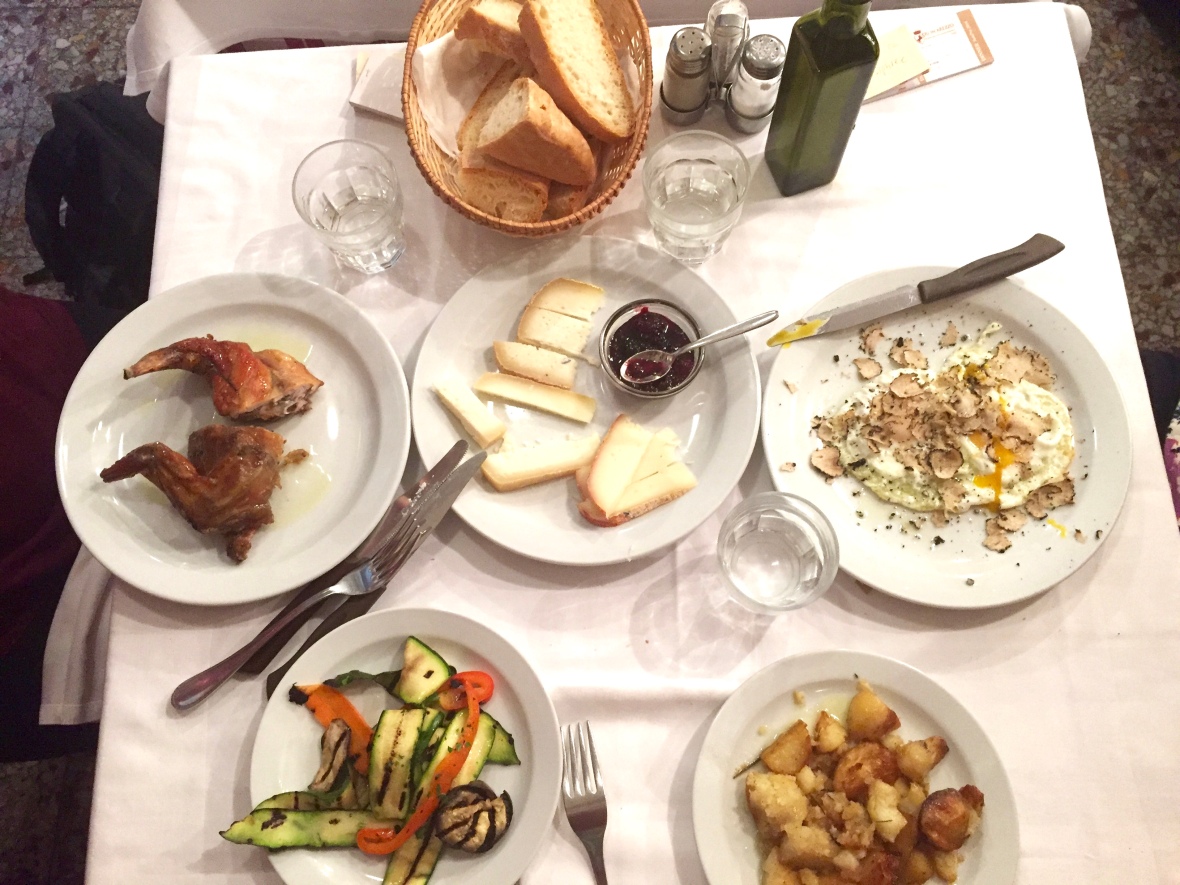Rome is teeming with life and culture; everywhere I turn is bound to be a work of art—and the Italians here are definitely prideful about this aspect. This is especially apparent in the dining experience I’ve had in the city, which seems to be almost a ceremony in Italy. Based on my observations, the Italian food culture is centered on pride and pleasure.
To begin with, servers in America are quite formal. Of course, they are friendly (for the most part), but at the same time they seem to carry an air of aloofness and don’t tend to converse with the diners about anything outside of the contents of the menu. Italian waiters and restaurant owners, on the other hand, are very much the opposite. In the several different restaurants that I’ve eaten here, the servers are immediately making jokes with their customers as soon as they walk in, and they have no hesitation in bombarding you with questions about yourself. Sometimes, they even flirt a little! Our first night in Rome, we found a venue in the city, and as soon as we were seated our waiter immediately began to tease my friend Julia. Even when it was very obvious that she was flustered, he kept persisting and went as far as to offer her a massage. Yeah…it might sound a little creepy, but we all had a good laugh. I personally love this type of interaction and feel that it makes the experience more fun, but this definitely isn’t pleasurable for everyone. I think that this difference in waiter behavior between American and Italian cultures may be an effect of tipping that is practiced in the States. For the most part, if the waiter is courteous, brings the food out to the customer quickly, and accommodates whatever else the customer asks for, then a sizable tip is practically expected. This practice adds pressure on the waiter to avoid displeasing the customer, so interaction is minimal. On the other side of the pond, tipping is very uncommon. For most restaurants, a fixed service fee is automatically added to the bill. So, regardless of the actual quality of the service, the waiter will always receive the same amount of pay. This seems to make them less self-conscious about their behavior and less prone to hold back from speaking their minds.
After receiving “warm” greetings from the waiter, I next notice the food that is served. Nothing here fails to be rich in flavor, and I find myself a lot of times having to pause from eating to register the strong tang on my sensitive taste buds. This really reflects the Italians’ pride in their flavors and in making sure every bite of the meal is savored. But personally, I’m not sure how long it’ll take for me to get accustomed to this…

From left to right: roasted rabbit, cheese plate, eggs with truffle, roasted vegetables and potatoes.
One last very glaring peculiarity that I’ve noticed here is the unwillingness of restaurants to accommodate for diners’ preferences. Venues charge extra for “personalization” of orders, such as asking for no olives on your pizza or adding extra cheese in your pasta. In some instances, the waiter will completely reject the request and even be offended for such a demand. This is really eye-opening for me because, having been immersed in American culture for most of my life, I don’t see this act as unnatural. This leads me to question whether the flaw resides in the Italians’ pride or us for being too self-entitled Americans.
The Italian dining culture is much more sacred than that of America, from the restaurant interactions to the food. This next month, I want to make sure to appreciate every aspect of this experience and absorb as much of the rich cuisine as I can.


